#Ernest Blerot
Text

A variety of Art Nouveau and Arts & Crafts style ceramic tiles.
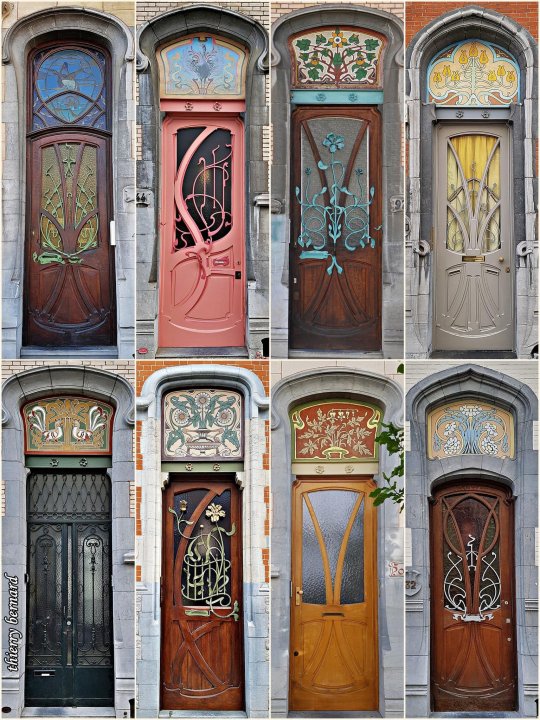
Art Nouveau - doors in Brussels designed by one of the most prolific Brussels architects of his time, Ernest Blerot

Art Nouveau doors in Barcelona

#Art Nouveau#Arts & Crafts#tile#ceramic tile#Ernest Blerot#Art Nouveau doors#doors#windows#architecture#stained glass#leaded glass
25 notes
·
View notes
Text
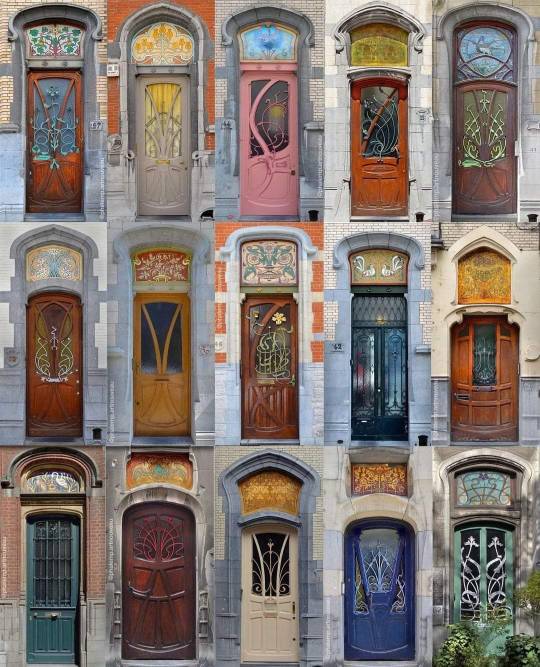
These doors. all bear the name of Ernest Blerot, outstanding architect of Art Nouveau , around 1900.
Brussels. Belgium
(Photos Phalempin Christian )
Art Nouveau, Italian Liberty...
Door Obsessed
Door Obse
14 notes
·
View notes
Text
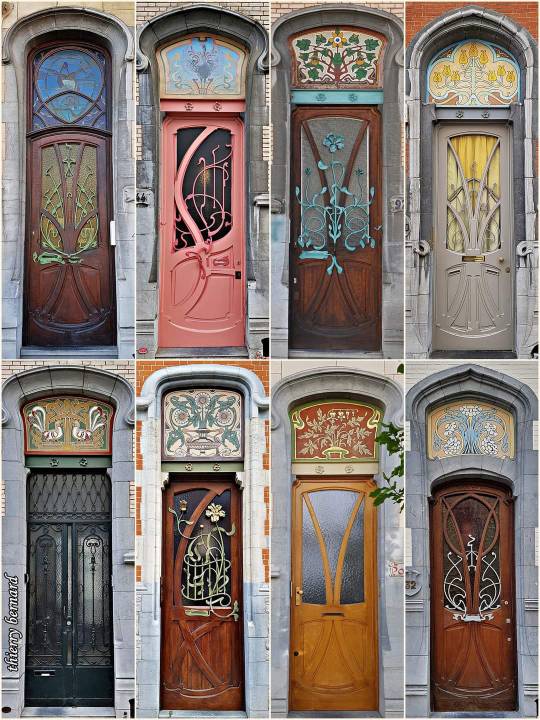
Art Nouveau ...
Superbes portes à Brussels dessinées par l'un des plus prolifiques architectes Bruxellois de l'époque, Ernest Blerot (période 1898 à 1900),
Photos : Thierry Bernard
1 note
·
View note
Photo

Art Nouveau in Brussels,Belgium
44 rue de Belle-Vue
Architect:Ernest Blérot (1899)
#art nouveau#Brussels#Belgium#door#pink#pink door#ernest blerot#architecture#design#europe#art#1899#19th century
63 notes
·
View notes
Text

"Brussels Art Nouveau :Doors.
Ixelles, rue Belle-Vue 46. Ernest Blerot.
Brussels, rue Philippe le bon 70. Victor Taelemans.
Saint Giles. avenue Jeff Lambeaux 12. Georges Peereboom.
Forest, avenue Besme 103. Alphonse Boelens.
Ixelles, rue du lac 6. Ernest Delune.
Ixelles, rue Belle-Vue 44. Ernest Blerot".
> Thierry Bernard > Art Deco, Art Nouveau & 20th Century Decratif Artlovers Share Group
11 notes
·
View notes
Photo
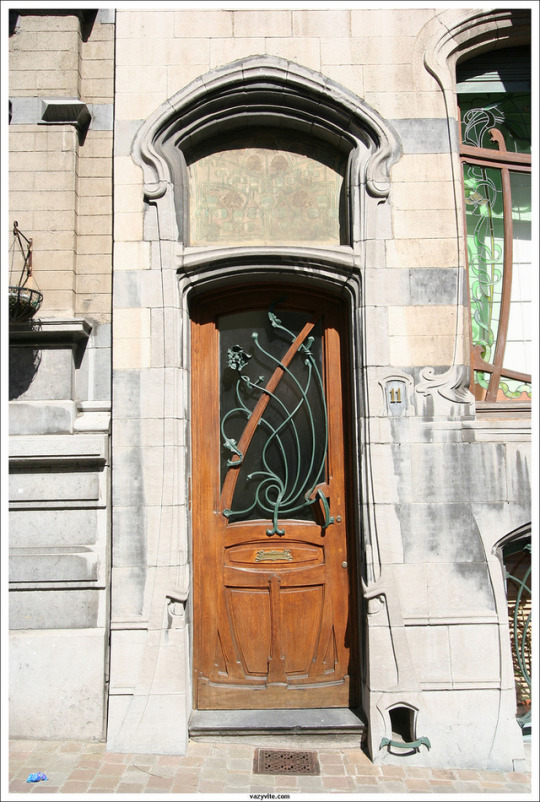
Art Nouveau à Bruxelles by vazyvite Les décors floraux de Ernest Blerot au 11 rue Vilain XIIII. Il faut toujours chercher sa signature gravée sur la façade. https://flic.kr/p/i9nsxZ
14 notes
·
View notes
Photo

Art Nouveau à Bruxelles by vazyvite Les décors floraux de Ernest Blerot au 11 rue Vilain XIIII. Il faut toujours chercher sa signature gravée sur la façade. https://flic.kr/p/i9nsxZ
2 notes
·
View notes
Text
Aspects of Brussels/Belgian Life: Architecture and buildings
Disclaimer: Now, I'm no Architecture expert, so the following blog consists of my (often ill-informed) observations, rather than absolute fact. I'm sure there are many better sources for proper architecture facts..
Now, as ever with Belgium and Brussels particularly, there is a bit of a melange of Dutch and French influences in the building styles. Emmie insists that Belgian buildings are “more Catholic” i.e. with more decoration and unnecessary frills than in the sober, Protestant Netherlands. While this is probably true, from my perspective, the Dutch influence is clear from the stepped roofs and plain brick work.
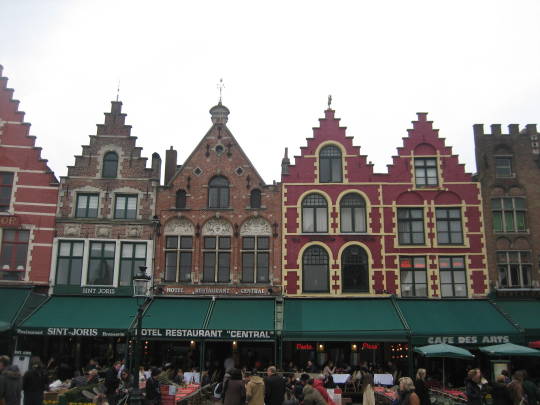
Some Dutch-style stepped roofs in Brugge

The French style town hall (”maison communale”) in Saint-Gilles
Art Nouveau is certainly the architectural style most associated with Brussels. Victor Horta, one of the most famous proponents of the style was Belgian and a number of buildings designed by him survive in Brussels, along with those designed by Paul Hankar, Henry van de Velde and Ernest Blerot. The style emphasises ornamentation, particularly borrowing from nature, with leaves, flowers and curves featuring heavily. Many of the architects also designed furniture/had furniture designed to go with their houses, and the style.

Old England, a classic example of art nouveau
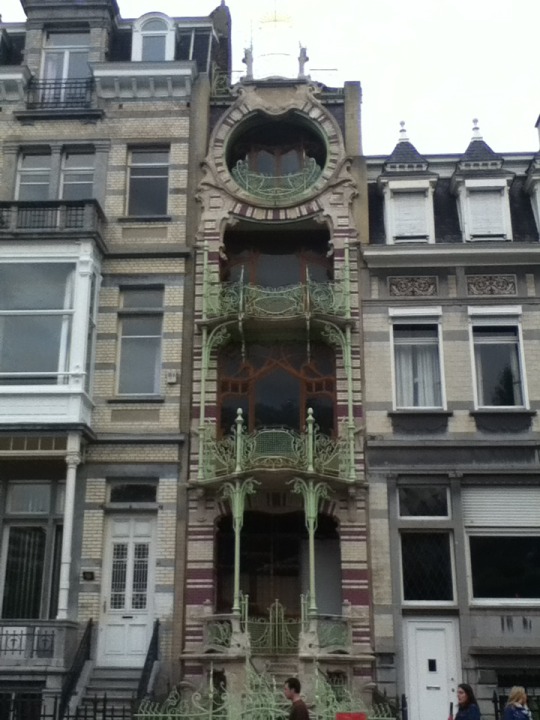
One of the best surviving examples is Horta's own house, which is beautiful, complete with its spiral staircase, stained glass and lovely combinations of wood, stone and metal. It's open to visit, but I don't have any interior photos, as they're not allowed…

Horta’s front door
I say one of the best surviving examples because of course, many of them didn't survive. Belgium seems particularly unsentimental when it comes to its fine buildings – you will often see ugly concrete 60s tower blocks alongside refined turn-of-the-century townhouses, and this eclecticism is one of the defining features of Brussels architecture. This seemingly indiscriminate tendency to replace nice buildings with ugly tower blocks is known as Brusselisation.
One of the most famous instances was Horta's Maison du Peuple. Built to be the central meeting place of the Belgian Workers' Party, it was a grand and impressive building. Despite public protest it was demolished in 1965 and replaced by a skyscraper for one of the city's administrative departments. Given the protest, the building was actually “dismantled” with the idea of putting it back together elsewhere. This never happened (inevitably), and instead various parts survive in the metro station near me, the Cafe Horta in Antwerp, and probably a few random warehouses across the country.

The maison du peuple as it was...

...and what replaced it
Brussels also has some buildings from Art Nouveau's successor Art Deco, a more modernist style with cleaner, straighter lines. I hadn't seen much of this style in Brussels, until I visited the Villa Empain recently. It's now a museum/gallery, aiming to bring together west and east, in a beautiful, but slightly imposing atmosphere. The feeling is one of being in a 1930s boardroom, with all the hard stone and dark wood.
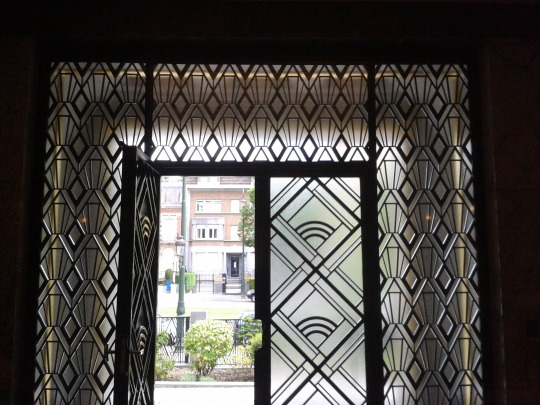
and apparently the inspiration for the wifi symbol

Lastly, I would add one less official style to this list. I've identified an “imperial style” - essentially buidlings built around 1900 (so largely contemporary to Art Nouveau) by the state, usually big and grand, and the end of wide boulevards so you can see them for miles (even more so then I guess) and also habitually decorated with big golden “L”s topped with a crown – Leopold didn't go in for subtlety. The Palais de Justice and Cinquantenaire arch and arcade fall into this category.
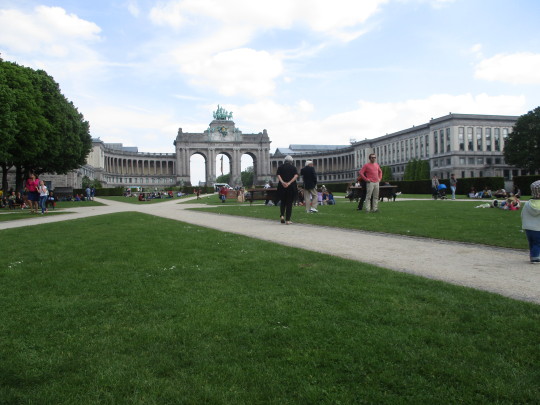

Those big Ls up close
So that's about it, as far as I'm concerned – I'm sure I've missed lots...
1 note
·
View note
Photo
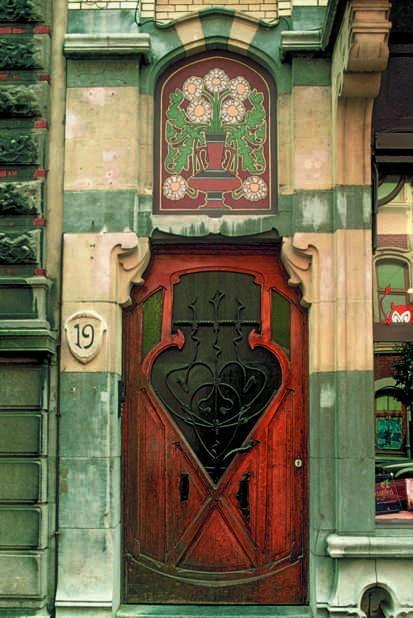
Ernest Blerot (Belgian, 1870-1957), Rue St. Boniface, 19, Brussels (1900)
413 notes
·
View notes